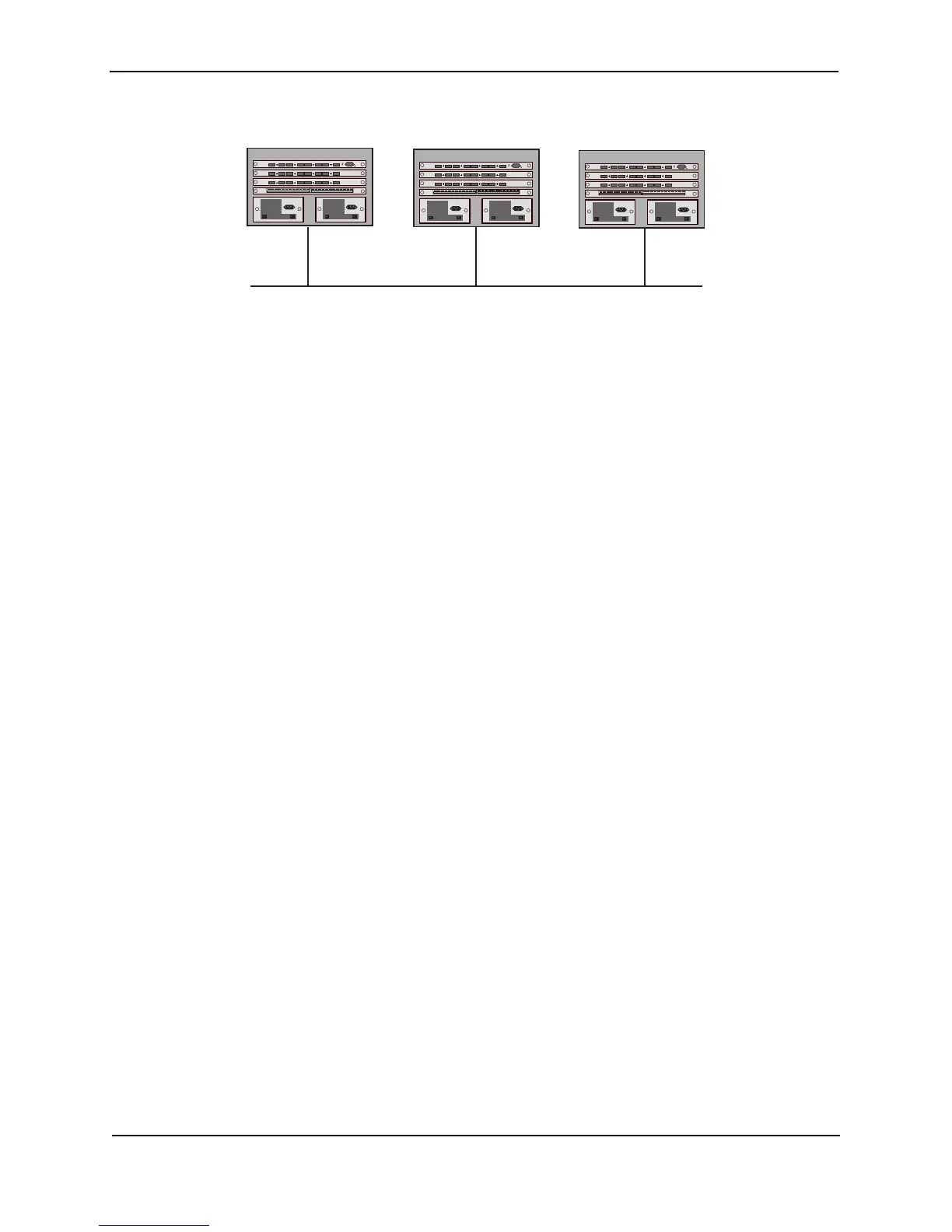Foundry Configuration Guide for the FESX, FSX, and FWSX
7 - 22 © Foundry Networks, Inc. December 2005
Figure 7.3 Example of Shared Media
Bridge Port States
Ports roles can have one of the following states:
• Forwarding – 802.1W is allowing the port to send and receive all packets.
• Discarding – 802.1W has blocked data traffic on this port to prevent a loop. The device or VLAN can reach
the root bridge using another port, whose state is forwarding. When a port is in this state, the port does not
transmit or receive data frames, but the port does continue to receive RST BPDUs. This state corresponds to
the listening and blocking states of 802.1D.
• Learning – 802.1W is allowing MAC entries to be added to the filtering database but does not permit
forwarding of data frames. The device can learn the MAC addresses of frames that the port receives during
this state and make corresponding entries in the MAC table.
• Disabled – The port is not participating in 802.1W. This can occur when the port is disconnected or 802.1W
is administratively disabled on the port.
A port on a non-root bridge with the role of Root port is always in a forwarding state. If another port on that bridge
assumes the Root port role, then the old Root port moves into a discarding state as it assumes another port role.
A port on a non-root bridge with a Designated role starts in the discarding state. When that port becomes elected
to the Root port role, 802.1W quickly places it into a forwarding state. However, if the Designated port is an Edge
port, then the port starts and stays in a forwarding state and it cannot be elected as a Root port.
A port with an Alternate or Backup role is always in a discarding state. If the port’s role changes to Designated,
then the port changes into a forwarding state.
If a port on one bridge has a Designated role and that port is connected to a port on another bridge that has an
Alternate or Backup role, the port with a Designated role cannot be given a Root port role until two instances of the
forward delay timer expires on that port.
Edge Port and Non-Edge Port States
As soon as a port is configured as an Edge port using the CLI, it goes into a forwarding state instantly (in less than
100 msec):
When the link to a port comes up and 802.1W detects that the port is an Edge port, that port instantly goes into a
forwarding state.
If 802.1W detects that port as a non-edge port, the port state is changed as determined by the result of processing
the received RST BPDU. The port state change occurs within four seconds of link up or after two hello timer
expires on the port.
Changes to Port Roles and States
To achieve convergence in a topology, a port’s role and state changes as it receives and transmits new RST
BPDUs. Changes in a port’s role and state constitute a topology change. Besides the superiority and inferiority of
the RST BPDU, bridge-wide and per-port state machines are used to determine a port’s role as well as a port’s
state. Port state machines also determine when port role and state changes occur.
